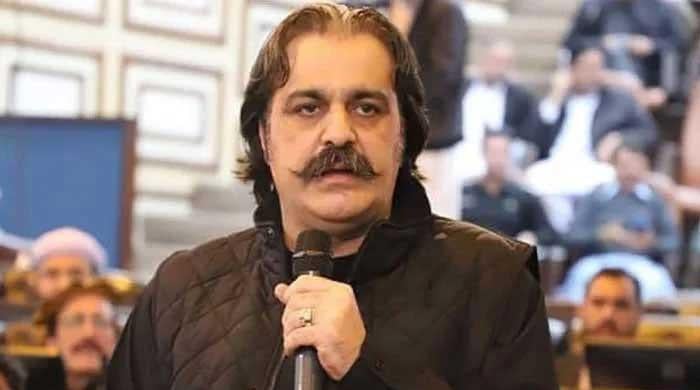Legal Perspectives Diverge on Chief Minister’s Resignation
Legal minds are at odds regarding the effective date of a chief minister’s resignation. Some assert it’s final upon submission to the governor, while others believe formal acceptance is necessary before a new chief minister can be elected.
This discussion has become critical as the KP Assembly is scheduled to convene on October 13 to elect Ali Amin Gandapur’s replacement. Governor Faisal Karim Kundi of Khyber Pakhtunkhwa verified receiving Gandapur’s resignation from his provincial leadership position on Saturday.
The governor’s office stated that “after careful examination and adherence to constitutional and legal requirements, the resignation will be processed accordingly”.
With opinions divided on whether a new chief minister can be elected in KP without formal acceptance of Gandapur’s resignation, legal experts consider these key questions: Does the governor have authority to delay accepting a resignation, and can a CM election proceed before acceptance?
Conflicting Interpretations
High court advocate Hassan Abdullah Niazi stated, “In my view, a chief minister’s resignation takes effect when it is addressed to the governor, as outlined in Article 130(8) of the constitution.”
Niazi clarified that although the constitution does not specify whether the governor must accept or can postpone acceptance, Article 133 allows the governor to request the chief minister to remain in office until a successor is chosen, “but that is the limit of the power in this instance”. Niazi believes the CM’s office “becomes vacant immediately upon the resignation being given to the governor”.
Barrister Ali Tahir finds the constitutional clause “quite straightforward”. According to Tahir, when a chief minister submits a resignation to the governor under Article 130(8), “the sole requirement is that the resignation be handwritten. Once that handwritten resignation is sent by the chief minister, it is, in my interpretation of the constitution, immediately accepted”.
Regarding the governor’s role, Tahir says it is “purely administrative. The governor cannot impede or withhold a chief minister’s resignation. Once it is submitted in the chief minister’s handwriting, it is immediately effective”.
Practically speaking, Tahir contends that this entire discussion is largely irrelevant because the provincial assembly possesses “complete constitutional power to remove or appoint a chief minister in one session, provided it has majority support. The governor is constitutionally obligated to ensure the chief minister in office has the assembly’s confidence”.
He added that the governor is also responsible for appointing as chief minister someone who has the confidence of the majority in the assembly, thus the governor “lacks any constitutional authority to withhold a resignation”.
Calling the matter “simple”, Tahir says that once a resignation is submitted, the governor’s role is simply administrative, and “even if the governor takes no action, the provincial assembly retains complete authority to elect a new chief minister”.
When asked if the governor can refuse to accept a chief minister’s resignation, Barrister Tahir stated, “Absolutely not. The constitution offers no mechanism or power to accept or reject a resignation, nor does it detail any consequences or criteria for doing so”.
However, not everyone concurs. Supreme Court advocate Hafiz Ehsaan Ahmad Khokhar contends that a chief minister’s resignation only becomes effective when the governor “formally accepts it under Article 130(8) of the constitution, and until acceptance, the chief minister retains office and exercises all constitutional powers”.
Although the constitution does not set a specific timeframe for acceptance, Khokhar believes the governor has a “constitutional responsibility to act within a reasonable timeframe, considering governance needs and public interest. Judicial interpretations under Articles 199 and 32 support reviewing undue delays in constitutional duties. Nonetheless, there isn’t a statutory minimum period, leaving the timing of acceptance to the governor’s judgment, guided by reasonableness”.
Regarding any CM election in the interim, Khokhar asserts that, until the resignation is accepted, the governor “may convene the provincial assembly to conduct business, but any election for a new chief minister before the office is vacant would be unconstitutional”.
The real challenge lies in interpreting Article 130. Supreme Court advocate Basil Nabi Malik analyzes some of the interpretive complexities, pointing out that “Article 130 does not stipulate formal approval or acceptance by the governor, whereas, via Article 133, the governor can ask the CM to continue until a successor is appointed.
Malik offers that “A possible interpretation could be that the governor lacks the authority to reject the resignation, and any ‘rejection’ or inaction on it could be seen as an invocation of Article 133 — in essence, by not accepting the resignation or refusing to accept it, the governor has requested that the CM continue until a successor is appointed”.
Malik believes this interpretation is “more reasonable than the alternative, which essentially compels an unwilling member of the provincial assembly to act in a position and assume responsibilities they no longer wish to assume”.
Essentially, Malik says, the resignation would be effective, but the CM would remain in office until a new CM is appointed. “So, it’s conceivable to interpret it to mean that the governor can suggest a continuation but cannot force it”.
However, there is a problem with this interpretation. Malik cautions that it leaves “a very dangerous gap in the political system, which the constitution seeks to avoid. Thus, the interpretation that makes it most workable would be that the resignation is effective, but the CM must continue until their replacement is appointed via the assembly”.



Comments (0)
No comments yet. Be the first to comment!
Leave a Comment